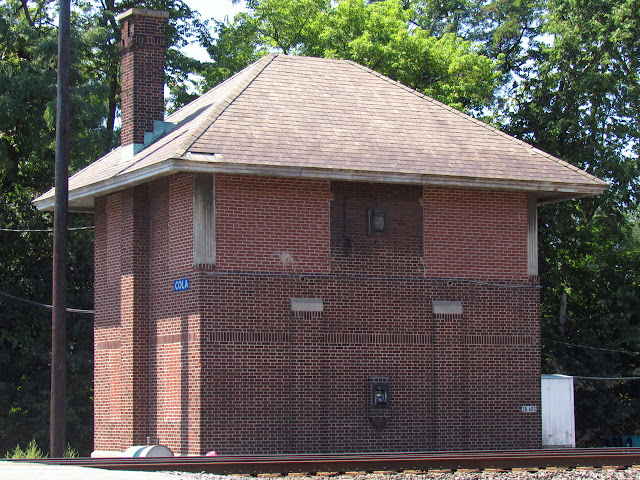It's time for another government document hiding in plain sight! This time we have CBTC case study from 2013 that covers the NYCTA 2003 L line project and SEPTA's 2005 Subway-Surface trolley tunnel project. You may recall my often cited MBTA study that determined that CBTC was not cost effective compared to coded track circuit cab signals. This document's primary goal is to explore the derails of each project and determine what lessons can be learned, however it does reach the conclusion that both projects reached their goals and were worth the investment. That might sound like an endorsement of CTBC, but a careful read of the document paints a more complicated picture. Yes, CTBC works, but should it be the preferred option? Read on to see my enumerated list of takeaways.
- Both SEPTA and the NYCTA had their own specific reasons for adopting
CTBC and the paper does not bother to evaluate those reasons. From the
point of evaluating the paper's endorsement of CTBC, the paper does not
do much to actually compare it with the alternatives, especially from a
cost basis. It basically says, NYCTA wanted to do X, CTBC allows for X,
NYCTA is now able to do X, CBTC works.
- The paper reveals why the NYCTA and SEPTA chose CTBC systems and the
answer might surprise you! SEPTA wanted a trolley tunnel ATC/ATP system
and got one free as compensation from AdTranz for late M-4 cars. The
NYCTA needs to be able to run both equipped and unequipped trains in
mixed service. I suspected that the issue was the NYC Subways extensive
use of single rail track circuiting and I was mostly correct in this
regard as trying to install a jointless audio frequency track coded
circuit system on top of a single rail track circuit system would
require some costly hardware "hacks" as opposed to less costly software
hacks.
- Cybersecurity is a ticking time bomb for CBTC systems. For both SEPTA
and NYCTA "A complete description of the necessary security measures for
the product over its life-cycle was not included in the System Safety
Certification Plan." Even if best practices were followed when the
systems were installed in 2003-2006, they have almost certainly aged out
(think SHA-1 or RSA 1024). Both systems communicate on the 2.4Ghz WiFi
band using a deterministic spread spectrum technique to avoid
interfering with WiFi. Wireless message integrity on SEPTA's system is
provided by CRC checks (not secure) and "authenticity" is provided by
header formatting and train ID (also not secure). It is highly likely
that tools could be created that could interfere with operations,
although human operators would mitigate potential impacts.
- The paper confirms that the the pre-2003 L line capacity was 20tph under
DT-ABS/ATS and was raised to 24tph under CBTC with a possible increase
to 26tph with traction power upgrades.
- The L line re-signaling was contracted for $217 million and SEPTA's
trolley CBTC was valued at $24 million. No effort was made to track
down cost overruns, the cost of alternative signaling or the cost of
debugging the CTBC.
- Both systems were indicated to have experienced 1-2 years of service
impacts due to debugging issues. SEPTA's were noted as "significant".
As of 2013 SEPTA's CBTC outages were pretty rare, however a trolley
needing to cut out CBTC and operate manually via traditional ABS
happened about 5-6 times per week. It was mentioned that SEPTA desired
additional degraded service modes for the future Rt 101/102 install as
"cut out" and "crawl" were insufficient.
- SEPTA's system was intended as a safety upgrade only. It did not
increase or decrease capacity, nor did it save money due to the
retention of the fixed ABS as backup. The capacity standard was 60tph.
- The number of maintainable items is as high as ABS systems. Long term
maintenance was not addressed, nor long term availability of proprietary
parts. Note, parts for cab signal systems are still available from
multiple vendors. If the original vendor cuts off support it may force
another round of re-signaling, raising CBTC lifecycle costs.
I had been generally aware of all these issues before I found this paper, but they had all come from first hand experience and unofficial sources on various forums. I encourage you all to read the paper and leave your takeaways in the comments.







